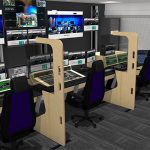Thurayas technology will aim to help medical response teams track and analyse data on the spread of COVID-19 and satellite communications will look to connect relief workers.
 Thuraya, the mobile satellite services subsidiary of the UAE-based satellite company Yahsat, has welcomed the launch of the COVID-19 Global Humanitarian Response Plan (HRP) announced by the United Nations Secretary-General on March 25.
Thuraya, the mobile satellite services subsidiary of the UAE-based satellite company Yahsat, has welcomed the launch of the COVID-19 Global Humanitarian Response Plan (HRP) announced by the United Nations Secretary-General on March 25.
The company will use its expertise and apply lessons learned from the 2014-2016 Ebola outbreak, to help the global community implement the HRP and save lives during the COVID-19 pandemic.
The Global HRP is a co-ordinated $2bn humanitarian response to fight COVID-19 in 51 of the worlds poorest countries across, Africa, the Middle East, Asia and South America. It is led by UN agencies with support from other international organizations and NGOs with a humanitarian mandate.
Providing ubiquitous coverage in more than 160 countries, Thuraya will enable always-on voice and internet connections for COVID-19 relief missions, especially in regions where telecommunications infrastructure is likely to be weak or unavailable.
The company had a similar arrangement with ETC during the 2014-16 Ebola outbreak, when it supplied voice and broadband links for the World Health Organization, US Centers for Disease Control and Prevention, NetHope and other NGOs in the severely affected areas of Sierra Leone.
Thuraya also has a standing agreement with ITU to deploy its terminals for immediate assistance during emergencies and natural disasters. Its mobile satellite phones and broadband devices enable solutions that can help relief workers achieve maximum impact while limiting their exposure to COVID-19.
Devices such as Thuraya X5-Touch and Thuraya IP+ support telemedicine applications that offer timely advice and support to caregivers treating affected communities in remote locations. Thuraya hopes to augment coronavirus relief work in remote locations through telemedicine solutions such as teleconferencing kits and connected ambulances.
The ambulance-to-hospital telemedicine system works over Thurayas IP broadband terminals and satellite network, connecting onboard wired and wireless medical devices to hospitals and diagnosing physicians. It transmits patients vital signs data in real-time.
Moreover, relief agencies can use the solution to collect data on the spread of the virus and visualise the pandemic, trace contacts and collect information to support health surveillance. It also looks to assist in coordinated efforts to deliver necessities such as vaccines and other medical supplies, or even satellite communications equipment.
The social distancing strategies introduced by governments across whole populations are expected to place severe strain on cellular networks and internet traffic. By increasing capacity over hotspots, Thuraya aims to ensure service continuity, even when there is a sudden surge in demand from remote medical setups, healthcare institutions and NGOs.
Commenting on the strategy, Sulaiman Al Ali, Deputy CEO of Thuraya, said: We fully support the COVID-19 Humanitarian Response Plan. Successful operations during emergencies depend on timely and proper communication among relief workers, donors and affected communities. In over 20 years of operation, and as a signatory of the UN Crisis Connectivity Charter, Thuraya has always stood by the international community during crises. We work closely with organizations such as International Telecommunication Union (ITU) and Emergency Telecommunications Cluster (ETC) to provide first responders and health missions a reliable satellite communications platform that is independent of terrestrial systems and available at all times.














































































